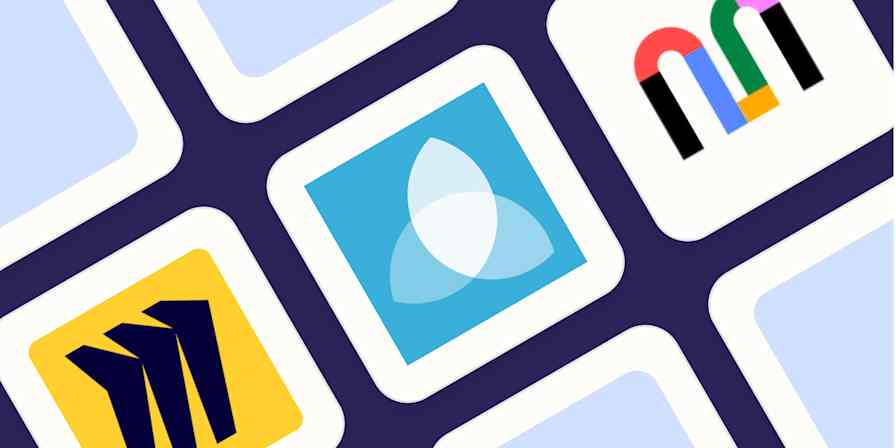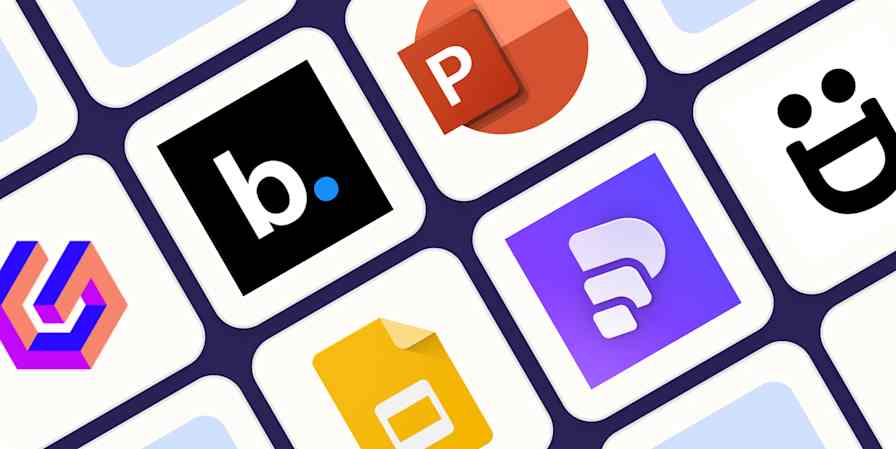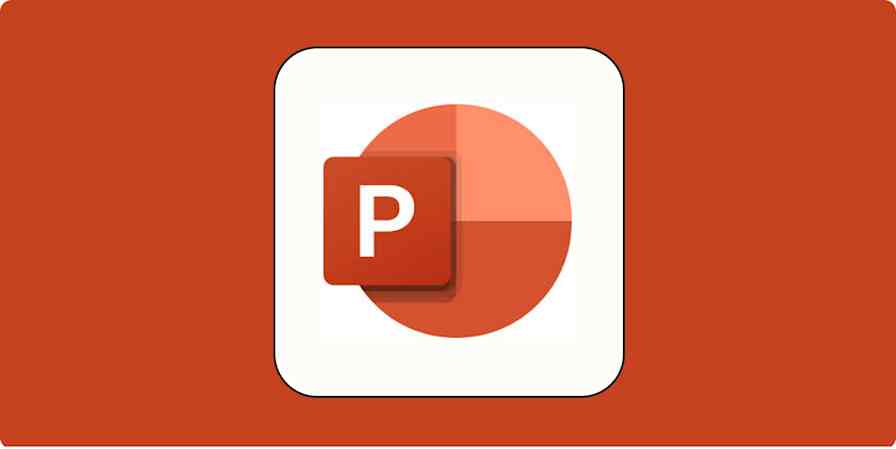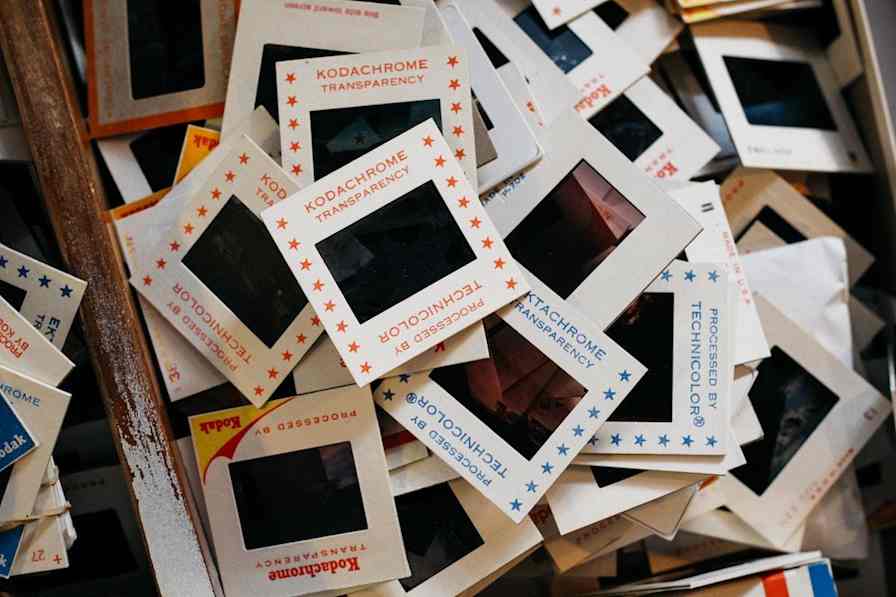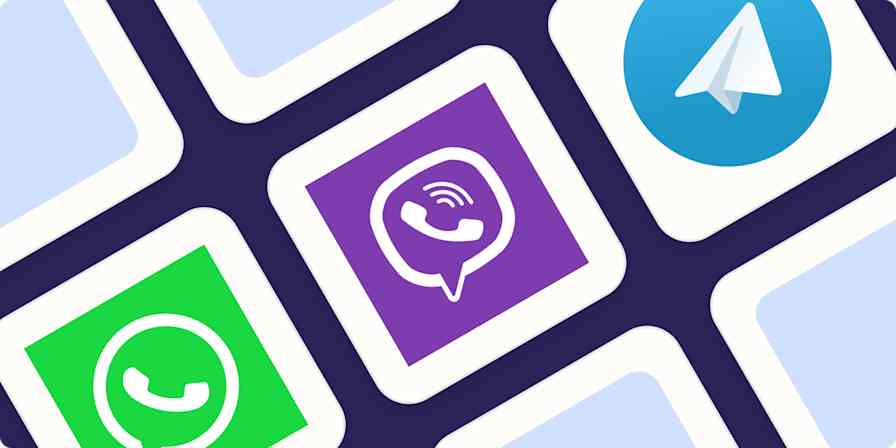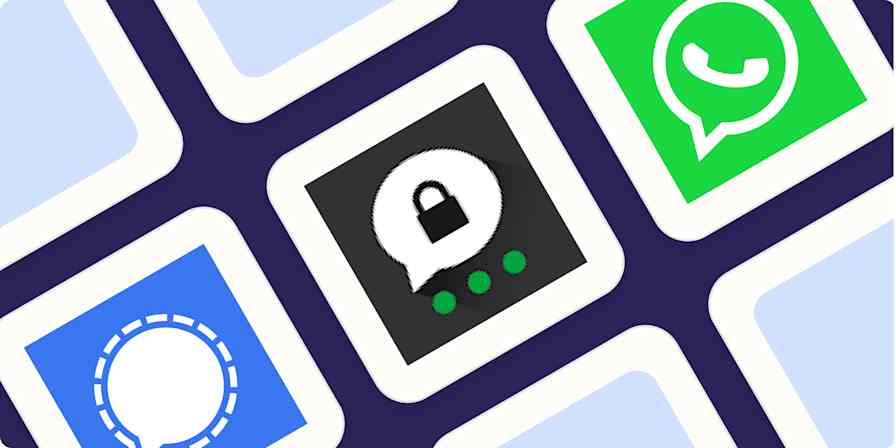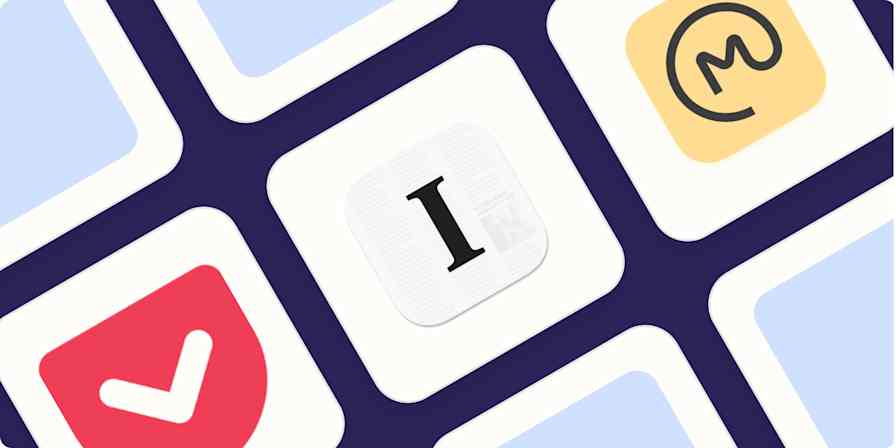We independently review every app we recommend in our best apps lists. When you click some of the links on this page, we may earn a commission. Learn more.
The latest presentation apps have made it easier than ever to format slides and create professional-looking slideshows without giving off a "this is a template" vibe. Even standard PowerPoint alternatives have updated key features to make it easier than ever to collaborate and create presentations quickly, so you can spend more time prepping for your actual presentation.
If, like me, you've used the same big name presentation tool unquestioningly for years, it's a whole new world out there. The newest crop of online presentation tools go way beyond the classic slideshow experience, with new features to keep your audience's attention, streamline the creation process with AI, and turn slide decks into videos and interactive conversations.
I've been testing these apps for the past few years, and this time, I spent several days tinkering with 25 of the top presentation software solutions out there to bring you the best of the best.
The best presentation software
Canva for a free presentation app
Beautiful.ai for AI-powered design
Prezi for non-linear, conversational presentations
Powtoon for video presentations
Pitch for collaborating with your team on presentations
Gamma for AI features
Mentimeter for audience engagement
Google Slides for Google ecosystem users
What makes the best presentation app?
How we evaluate and test apps
Our best apps roundups are written by humans who've spent much of their careers using, testing, and writing about software. Unless explicitly stated, we spend dozens of hours researching and testing apps, using each app as it's intended to be used and evaluating it against the criteria we set for the category. We're never paid for placement in our articles from any app or for links to any site—we value the trust readers put in us to offer authentic evaluations of the categories and apps we review. For more details on our process, read the full rundown of how we select apps to feature on the Zapier blog.
When looking for the best presentation apps, I wanted utility players. After all, slideshows are used for just about everything, from pitch decks and product launches to class lectures and church sermons. With that in mind, here's what I was looking for:
Pre-built templates. The best presentation tools should have attractive, professional-looking templates to build presentations in a hurry.
Sharing and collaboration options. Whether you plan to share your webinar slides later, or you just want to collaborate with a coworker on a presentation, it should be easy to share files and collaborate in real-time.
Flexibility and customization options. Templates are great, but top presentation apps should enable you to customize just about everything—giving you the flexibility to build exactly what you need.
Affordability. Creating compelling presentations is important, but you shouldn't have to bust your budget to make it happen. With capable free tools on the market, affordability is a top consideration.
Standalone functionality. There's no reason to use multiple tools when one can do it all, so I didn't test any apps that require and work on top of another presentation app like PowerPoint or Google Slides.
Familiar, deck-based interface. For our purposes here, I only tested software that uses slides, with the familiar deck-based editor you expect from a "presentation" tool (versus, for example, a video creation app).
AI. While there's a lot of variation among AI capabilities, every app on this list offers at least some kind of AI. A lot of it is table-stakes at this point, but there are also some pretty impressive AI presentation makers out there.
Beyond that, I also looked for presentation apps that brought something unique to the table—features above and beyond what you can get for free from a legacy solution like PowerPoint or Keynote.
Here's what my testing workflow looked like:
I went through any onboarding or guided tutorials.
I created a new deck, scanning through all available templates, noting how well-designed they were (and which were free versus paid).
Where available, I also ran through the process of generating a deck using AI.
I added new slides, deleted slides, edited text and images, and played around with other content types.
I changed presentation design settings, like color schemes and background images.
I reviewed and tested the sharing and collaboration options.
I tested out presenter view (when available).
After my first round of testing, I went back into the top performers to test any unique or niche features, like brand settings, team features, and interactive content. With that, these are the best presentation apps I found—each one really brings something different or radically easy to the table.
The best presentation software at a glance
Best for | Pricing | |
|---|---|---|
A free option | Free plan available; paid plans from $10/user/month | |
AI-powered design | From $12/month | |
Non-linear presentations | Free plan available; paid plans from $5/month | |
Video presentations | Limited free plan available; paid plans from $15/month | |
Collaboration | Free plan available; paid plans from $25/month for 2 users | |
AI features | Free plan available; paid plans from $8/user/month | |
Audience engagement | Free plan available; paid plans from $13/user/month | |
Google ecosystem users | Free plan available; from $14/user/month to access AI features |
The best free presentation software
Canva (Web, Windows, Mac, Android, iOS)

Canva pros:
Excellent free plan
Tons of amazing templates for all use cases
Feature-rich
Canva cons:
The AI tools aren't groundbreakingly useful
Canva offers one of the most robust free plans of all the presentation apps I tested. The app delays account creation until after you've created your first design, so you can get started building your presentation in seconds. There's an almost overwhelming number of beautiful templates (many available for free), including those designed specifically for education or business use cases.
Choose from a handful of preset animations to add life to your presentations, or browse the library of audio and video files available to add. Canva also has a number of options for sharing your presentation, including adding collaborators to your team, sharing directly to social media, and even via QR code.
Present directly from Canva, and let audience members submit their questions via Canva Live. Once you share a link to invite audience members to your presentation, they can send questions for you to answer. As the presenter, you'll see them pop up in your presenter view window, so you can keep the audience engaged and your presentation clear. Alternatively, record a presentation with a talking head bubble—you can even use an AI presenter here—to share remotely.
Canva has added a number of AI-powered tools, but I wasn't super impressed by them yet. The Magic Design tool, for example, isn't much more useful than the many pre-designed templates already available, while Magic Write is basically just white-labeled ChatGPT. These features will likely improve in time, but for now, you're better off starting from one of Canva's many great templates.
With Zapier's Canva integration, you can automate your presentation workflows. Build automated systems across your apps, like automatically creating presentations based on form submissions or uploading assets based on spreadsheet entries. Learn more about how to automate Canva, or get started with one of these pre-made workflows.
Create Canva designs from new or updated Google Sheets rows
Export designs in Canva from new rows in Google Sheets
Canva pricing: Free plan available; paid plans start at $120/year for 1 user and include additional features like Brand Kit, premium templates and stock assets, and additional AI-powered design tools.
If you're looking for a capable free presentation tool with a more affordable upgrade, Zoho Show is worth a look. It's completely free for most features, offers a clean, intuitive editor, and includes a number of great templates. Plus, you can automate Zoho Show by connecting it with Zapier. You can also check out these other Canva alternatives.
The best presentation app for AI-powered design
Beautiful.ai (Web, Mac, Windows)
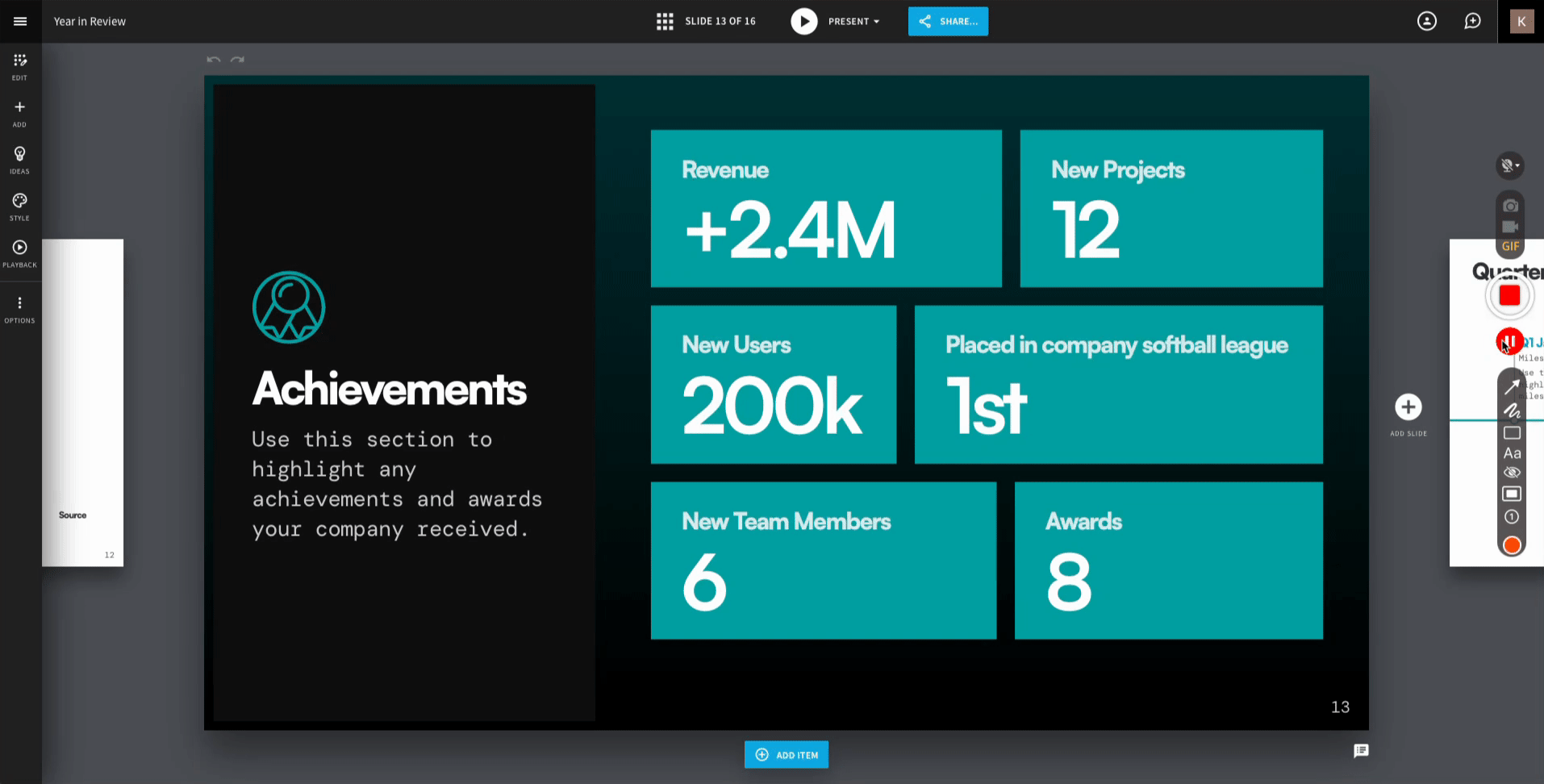
Beautiful.ai pros:
Effortless AI design
No fussing around with alignment
Still allows for customization
Beautiful.ai cons:
No free plan
If you're like me, editing granular spacing issues is the absolute worst part of building a presentation. Beautiful.ai uses artificial intelligence to take a lot of the hassle and granular design requirements out of the presentation process, so you can focus on the content of a presentation without sacrificing professional design. If I needed to make presentations on a regular basis, this is the app I'd use.
Many apps have recently added AI design features, but Beautiful.ai has been doing it for years—and they've perfected the experience of AI design, ensuring the tool's reign as the most streamlined and user-friendly option for AI design.
The editor is a little different from most presentation apps, but it's still intuitive—and you'll start off with a quick two-minute tutorial. When creating a new slide, scroll through "inspiration slides" to find a layout you like; once you choose, the app will pull the layout and automatically adapt it to match the design of the rest of your presentation.
With 16 themes, several templated slides, over 100 fully-designed templates, and more than 20 different color palettes to choose from, Beautiful.ai strikes a perfect balance between automation and customization.
While Beautiful.ai doesn't offer a free plan, paid plans are reasonably priced and offer sharing and collaboration options that rival collab-focused apps like Google Slides. And speaking of Google, you can connect Beautiful.ai with Google Drive to save all your presentations there.
Note: I retested the generative AI feature this year. It's great for adding individual slides to an existing presentation—automatically choosing the best layout and matching the design to the rest of the deck—but as with most other apps, it struggled to pull in relevant images.
Beautiful.ai pricing: Plans start at $12/month for unlimited slides, AI content generation, viewer analytics, and more. Upgrade to a Team plan for $40/user/month to get extra collaboration and workspace features and custom brand controls.
If you're a founder looking for an AI presentation tool for your pitch deck, Slidebean is a great Beautiful.ai alternative for startups. The app offers a number of templates; a unique, content-first outline editor; and a generative AI tool that builds a whole pitch deck based on your website. I didn't include it on the list mainly because the product serves such a focused niche.
The best presentation app for conversational presentations
Prezi (Web, Mac, Windows, iOS, Android)

Prezi pros:
Doesn't restrict you to standard presentation structure
Lots of customization options
Prezi Video lets you display a presentation right over your webcam video
Prezi cons:
Steep learning curve
Struggling to squeeze information into a basic, linear presentation? Give Prezi a try. Unlike nearly all other presentation apps on the market, Prezi Present doesn't restrict the structure of your presentation to a straight line. The editor focuses on topics and subtopics and allows you to arrange them any way you want, so you can create a more conversational flow of information.
With the structural flexibility, you still get all the same customization features you expect from top presentation software, including fully editable templates. There's a learning curve if you're unfamiliar with non-linear presentations, but templates offer a great jumping-off point, and Prezi's editor does a good job of making the process more approachable.
Plus, Prezi comes with video features that help you take remote presentations to a new level. You can record a video where the presentation elements are displayed right over your webcam feed. Record and save the video to share later, or connect with your video conferencing tool of choice (including Zoom, Microsoft Teams, and Google Meet) to present live.
Prezi's generative AI feature works ok, but it's more useful as a wireframe. When I asked it to create a presentation about the Stanley Cup Playoffs, for example, the resulting content read a lot like a student writing a term paper in the broadest strokes possible to avoid doing any actual research.
Prezi pricing: Free plan available with essential presentation features and limited access to AI and basic templates; paid plans start at $5/month and include additional features like privacy control, unlimited visual content, and a PowerPoint converter.
The best presentation app for video presentations
Powtoon (Web, iOS, Android)

Powtoon pros:
Timing automatically changes based on the content on the slide
Can toggle between slideshow and video
Can orient presentation as horizontal, vertical, or square
Powtoon cons:
Limited free plan
Powtoon makes it easy to create engaging videos by orienting the editor around a slide deck. Editing a Powtoon feels just like editing a presentation, but by the time you finish, you have a professional video.
You can edit your slides at any time, and when you hit play, a video plays through your deck—the feel is almost like an animated explainer video. Each slide includes the animations you choose and takes up as much time as is needed based on the content on the slide. Powtoon figures the timing automatically, and you can see in the bottom-right of the editor how much time is used on your current slide versus the total presentation. If you ever want to present as a slide deck, just toggle between Slideshow and Video.
You'll likely need to subscribe to a paid plan to get the most out of Powtoon—like creating videos longer than three minutes, downloading them as MP4 files, and white-labeling your presentations—but doing so won't break the bank. Plus, you'll unlock tons of templates complete with animations and soundtracks.
One of my favorite Powtoon features is the ability to orient your video: you can choose horizontal orientation (like a normal presentation) or opt for vertical (for mobile) or square (for social media). When your presentation is ready, you can publish straight to YouTube, Wistia, Facebook Ads, and any number of other locations.
Powtoon pricing: Limited free plan available; paid plans start at $15/month and include videos up to 10 minutes in length, priority support, additional storage, and more.
The best presentation app for collaborating with your team
Pitch (Web, Mac, Windows, iOS, Android)

Pitch pros:
Google levels of collaboration
Assign slides to specific team members
Capable generative AI feature
Pitch cons:
User interface is a little different than you're used to
Need to collaborate on presentations with your team? Pitch is a Google Slides alternative that gets the job done. As far as decks go, Pitch includes all the beautifully designed templates, customizability, and ease of use you expect from a top-notch presentation tool. But the app really shines when you add your team.
The right-hand menu is all about project management and collaboration: you can set and update the status of your deck, assign entire presentations or individual slides to team members, plus comment or add notes. Save custom templates to make future presentations even easier and faster.
You can also invite collaborators from outside your company to work with you on individual decks. And if you opt for a paid plan, Pitch introduces workspace roles, shared private folders, and version history.
Pitch also offers one of the more impressive generative AI features on this list. It still struggles to pull in relevant images, but I found the AI-generated written content and design to be top-notch.
Pitch pricing: Free plan offers unlimited presentations and custom templates for up to 5 members and 2 guests; paid plans start at $25/month for 2 editors with additional workspace features, presentation analytics, and more.
The best AI presentation app
Gamma (Web)

Gamma pros:
Creates fully fleshed-out presentations from a prompt
Conversational chatbot-like experience
Can still manually edit the presentation
Gamma cons:
Not as much granular customization
I tested a lot of apps claiming to use AI to up your presentation game, and Gamma's AI features were head and shoulders above the crowd.
Simply give the app a topic—or upload an outline, notes, or any other document or article—approve the outline, and pick a theme. The app will take it from there and create a fully fleshed-out presentation. It's far from perfect, but Gamma produces a very useful jumping-off point. (Last year, it was by far the best, but this year, other apps are catching up.)
Here's the key: Gamma is much more geared toward the iterative, chatbot experience familiar to ChatGPT users. Click on the AI icon on the right-hand side of the top menu bar to open the chat, and you'll see suggested prompts—or you can type in your own requests for how Gamma should alter the presentation.
Once you've done all you can with prompts, simply close the chat box to manually add the finishing touches. While you do sacrifice some granular customizability in exchange for the AI features, you can still choose your visual theme, change slide layouts, format text, and add any images, videos, or even app and web content.
Gamma pricing: Free plan includes unlimited users, 400 AI deck credits, and basic view analytics; upgrade to the Plus plan for $8/user/month to get unlimited AI creation, remove Gamma branding, and more.
Decktopus is another capable presentation app with solid AI features. The conversational chatbot flow gives you the chance to clarify and add context to your prompt and edit the theme, outline, and slide layouts before generating the full deck. The app includes a number of high-quality template—including a number of themes for AI-generated decks—and a deck editing interface similar to Canva's.
The best presentation app for audience engagement
Mentimeter (Web)

Mentimeter pros:
Tons of audience engagement features
Simple for participants to interact
Mentimeter cons:
Less granular customizability
Bit of a learning curve
If you need to engage with an audience during your presentation, Mentimeter makes that easy. The app is designed around interactive elements like quizzes, surveys, Q&As, sliders, and more (even a Miro whiteboard!).
Each of these is included in a number of different, professional-looking templates, so you can build a fully interactive presentation super quickly.
When it's time to present, your audience members can scan the QR code with their phone cameras or type in the URL and access code to participate. There's one code per presentation (so they won't have to do this on every slide), which gives access to each slide and updates as you move through the presentation.
There are two main drawbacks to this one, though. First, there's a bit of a learning curve and less familiar editing interface (but I found it pretty easy to learn with some practice). The other drawback is that you can't get as granular with the visual customization as you can with many other presentation tools.
Mentimeter pricing: Free plan includes 50 participants per month and 34 different slide types; upgrade to the Basic plan for $13/presenter/month to get unlimited participants and slide types, private presentations, additional team features, and more.
The best presentation app for Google users
Google Slides with Gemini (Web)

Google Slides pros:
Gemini AI built in
Extensive library of templates and visual elements
Works seamlessly with other Google apps
Google Slides cons:
Not the most advanced without Gemini
Google Slides is a straightforward presentation app that nearly everyone has some familiarity with. It integrates seamlessly with the rest of Google Workspace, making it easy to pull in assets from across your Google account and share presentations across your team.
In previous years, Google Slides hasn't been able to compete with other, more modern apps—but in this year's testing, I was impressed with the strides the app has taken recently. Google added a number of new high-quality templates and a whole library of pre-built elements—called "Building Blocks" in the right-hand menu—including agendas, lists, data visualizations, quotes, and more. The interface has also seen a slight facelift, without compromising on the familiarity aspect.
The biggest upgrade comes from bringing Gemini—Google's conversational AI chatbot—into Google Slides. While Gemini can't generate an entire deck from scratch (like many other AI presentation apps), it can seamlessly pull information from Gmail threads, Google Drive—including Docs, Sheets, and Forms—and even Google Photos to generate individual slides. Simply open Gemini from the right side of the top menu, and choose from the suggested prompts or enter your own.
You'll need a paid Google Workspace subscription (Business Standard or higher) to access these features, but plans are on par with many of the other presentation apps I tested.
You can go beyond the Google Workspace when you connect Google Slides with Zapier, so you can automate tasks like refreshing the data on your slides, sharing presentations, and more. Learn more about how to automate all your Google apps, or get started with one of these pre-made templates.
Get new weather forecasts and refresh Google Slides charts
Create presentations from templates in Google Slides from new documents in Google Docs
Refresh charts on a Google Slides presentation when rows are updated on Google Sheets
Google Slides pricing: Free to use Google Slides; upgrade to the Google Workspace Business Standard plan for $14/user/month to get access to Gemini for Google Slides.
What about the old standbys?
You might notice some major presentation players aren't on this list, including OGs Microsoft PowerPoint and Apple Keynote. These apps are perfectly adequate for creating basic presentations, and they're free if you have a Windows or Mac device.
I didn't include them on the list because the presentation space has really developed in the last several years, and after testing them out, I found these behemoths haven't kept pace. If they weren't made by Microsoft and Apple, I might not even be mentioning them. They're pretty basic tools, they're behind the curve when it comes to templates (both quantity and design), and they don't offer any uniquely valuable features like robust team collaboration, branding controls, video, and so on.
Microsoft Copilot for PowerPoint shows some promise when it comes to adding AI features into PowerPoint, but I wasn't all that impressed by those features just yet—and the upgrade required to access Copilot for PowerPoint can get pricey. Rest assured, I'm watching this space, and the next time we update this article, I'll retest to see what new features may be available.
In any case, if you're reading this, you're probably looking for an alternative that allows you to move away from one of the big names, and as the presentation platforms featured above show, there's a ton to gain—in terms of features, usability, and more—when you do.
What about PowerPoint and Google Slides add-ons?
While I focused my testing on tools with full feature-sets—those that can serve as your sole presentation tool—there are a ton of add-on tools you can use atop big name tools like PowerPoint and Google Slides.
If you're looking to expand what you can do with PowerPoint or Google Slides, apps like Marq (formerly Lucidpress), Plus AI, Slidesgo, and Simplified can help you do things like access additional templates, save branded assets, and generate AI presentations from the app you're already using.
Related reading:
This post was originally published in October 2014 and has since been updated with contributions from Danny Schreiber, Matthew Guay, Andrew Kunesh, and Krystina Martinez. The most recent update was in May 2025.

